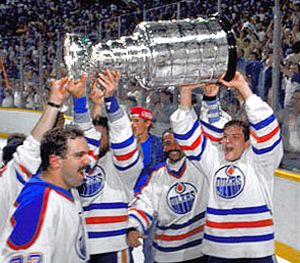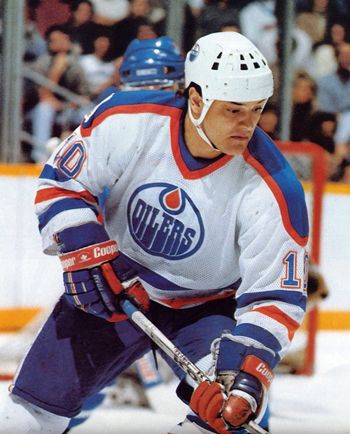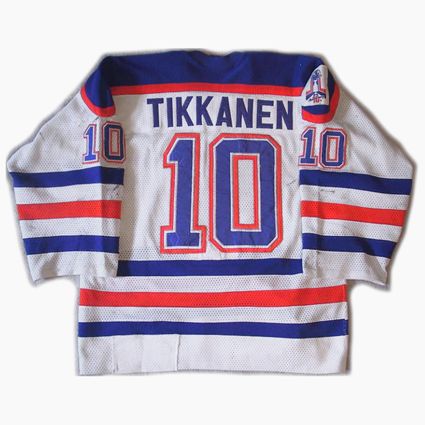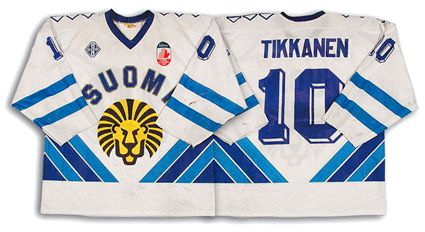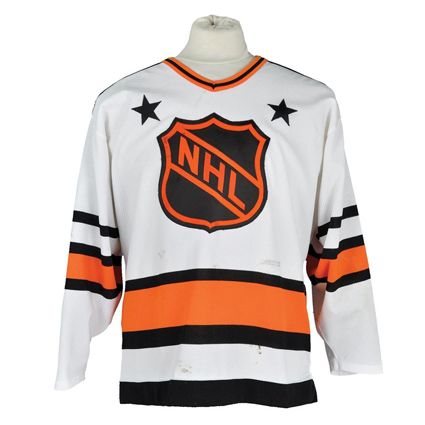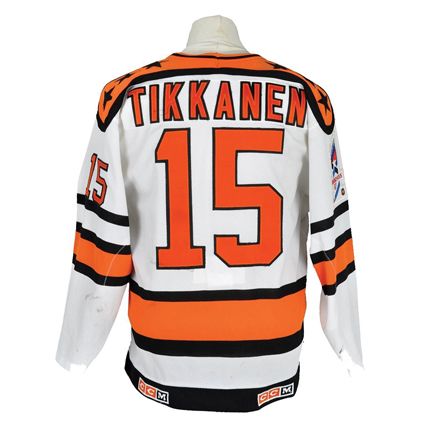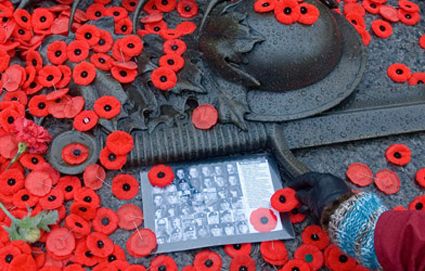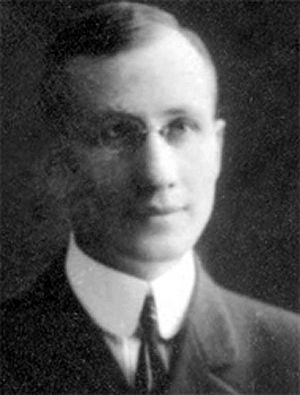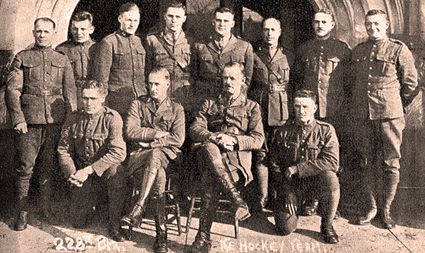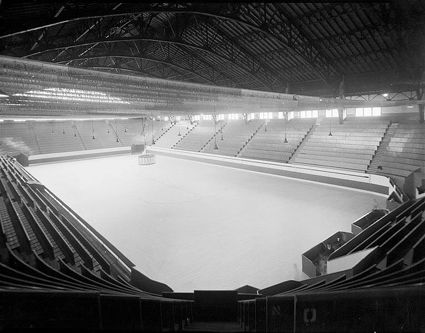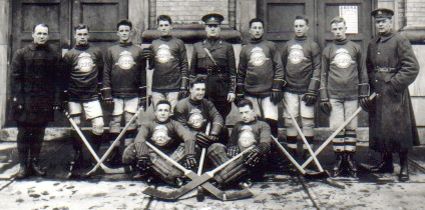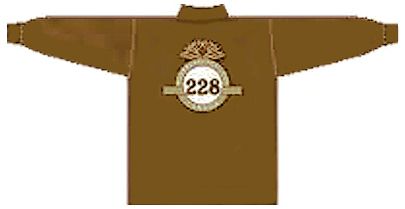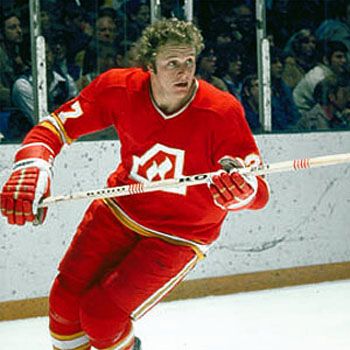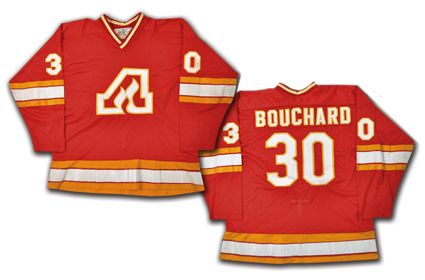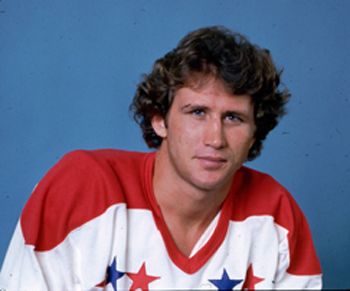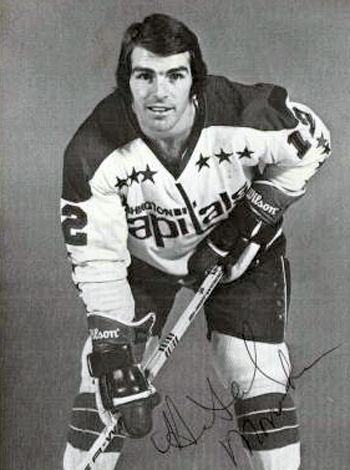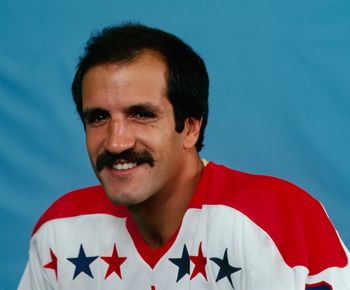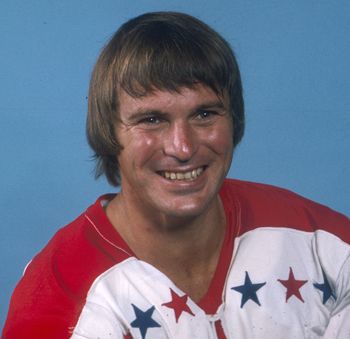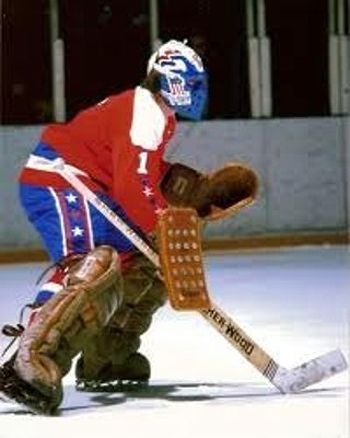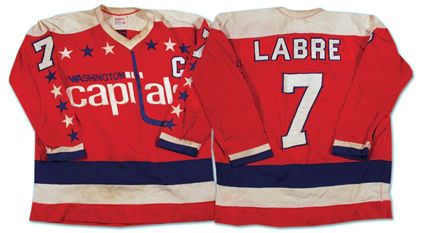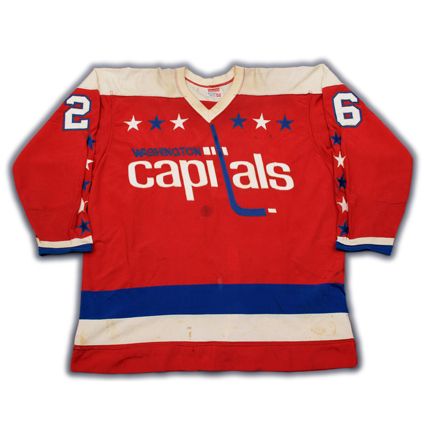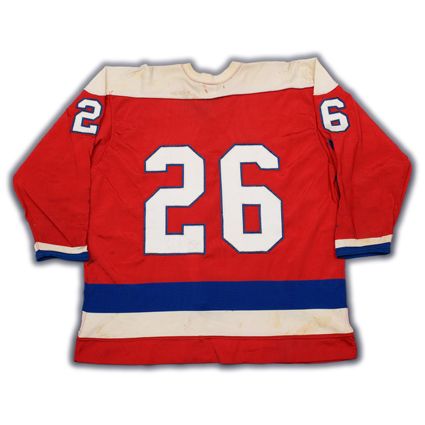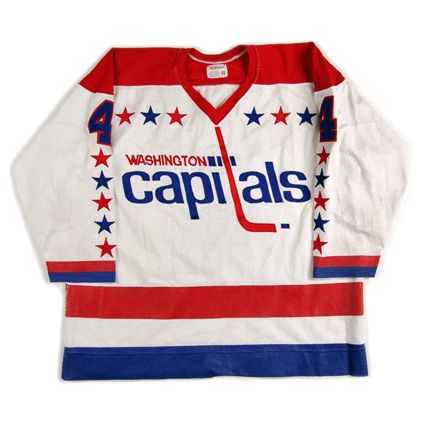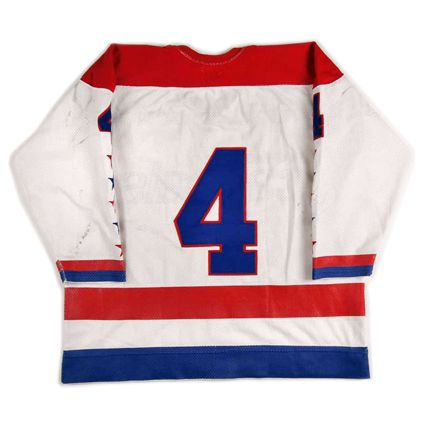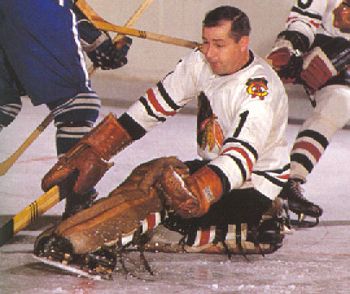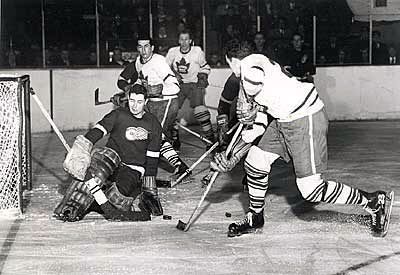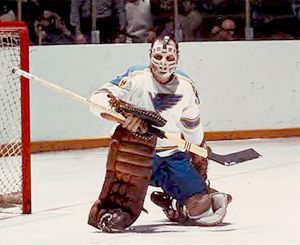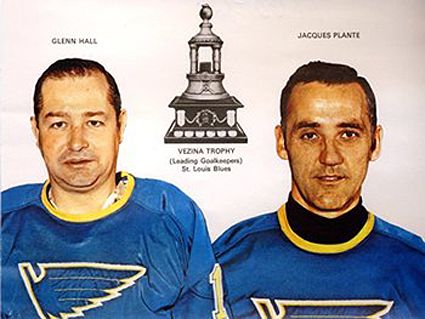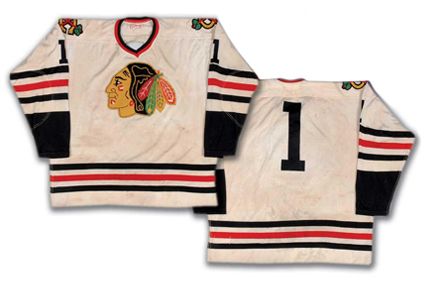Saturday, November 12, 2016
1988-89 Edmonton Oilers Esa Tikkanen Jersey
After beginning his career with HIFK in Finland, the human sandpaper that was Esa Tikkanen brought his abrasive style to the Edmonton Oilers in 1985, who were in the midst of their Stanley Cup dynasty. Tikkanen actually joined the Oilers for the first time during the Stanley Cup Finals once he was finished playing for Finland at the World Championships. He appeared in three games of the finals as the Oilers were defeating the Philadelphia Flyers, which was enough to earn Tikkanen his name on the Stanley Cup before he had ever played a regular season game in the NHL!
The following season Tikkanen was limited to 35 games with the Oilers because of a broken foot but saw time in 8 of the Oilers 10 playoff games as they were eliminated in the second round.
He was teamed on a line with Wayne Gretzky and fellow Finn Jari Kurri beginning with the 1986-87 season as the defensive member of the trio, which suited his tenacious, gritty style of play and complimented the offensive skills of his linemates perfectly. The results were immediate, as Gretzky and Kurri finished 1-2 in league scoring while Tikkanen was set up for 34 goals and credited with 44 assists for 78 points in the process while his 120 penalty minutes spoke to his feisty style of play. The season concluded with the Oilers once again regaining their grip on the Stanley Cup.
1987-88 saw Tikkanen, now known for his "Tikkanese" brand of Finnish-English hybrid language which not even fellow Finn Kurri could understand, much less the opponents Tikkanen was chirping at, repeated his offensive contributions with 74 points, but really stepped up in the playoffs with 10 goals and 27 points in 19 games as the Oilers won the Stanley Cup for the fourth time in five seasons.
During the 1988-89 season, Tikkanen set an NHL record on this date in 1988, when he scored two shorthanded goals in a span of just 12 seconds on his way to a hat trick. His pair of shorthanded goals in 12 seconds broke the previous record of 25 second held by another Oiler, Pat Hughes since 1983. Tikkanen was named NHL Player of the Week for his efforts. After missing five weeks time due to a broken left wrist, he began a point scoring streak on his first game back which stretched 13 games and proved to be the Oilers longest of the season. Despite the time missed, Tikkanen equalled his career best with 78 points despite Gretzky's departure to Los Angeles before the season. Tikkanen led the Oilers that season with eight shorthanded goals and was a finalist for the Selke Trophy as the best defensive forward.
Tikkanen recorded his third 30 goal season in 1989-90 as the Oilers regrouped behind the leadership of Mark Messier and won their fifth Stanley Cup, Tikkanen's fourth in six seasons, thanks in part to his 13 goals and 24 points in 22 games, good for fourth on the team. He was again a Selke finalist at the conclusion of the season.
Something quite remarkable happened in the 1990-91 season when Tikkanen led the Oilers in scoring, and with a mere 69 points, the first time anyone had ever led the Oilers in scoring with less than 100 points as the once dominant Oilers came back to the pack with a 37-37-6 record. Tikkanen was the runner-up for the Selke Trophy at season's end.
He missed half of the 1991-92 season, mainly due to a fractured shoulder which kept him out of action for three and a half months. For the 1992-93 season, Tikkanen played in 66 games with the Oilers, scoring 33 points in 66 games, he was traded to the New York Rangers for Doug Weight, bringing to an end the Oilers era of his career, which would continue for another nine seasons with a multitude of clubs, as he would never enjoy the kind of stability he had in Edmonton again.
Today's featured jersey is a 1988-89 Edmonton Oilers Esa Tikkanen jersey from the season Tikkanen set the NHL record for the two fastest shorthanded goals in league history.
This jersey features the Oilers 10th Anniversary patch, commemorating their time in only the NHL, as the club was actually founded in 1972, some 17 seasons earlier!
Bonus jersey: Today's bonus jersey is a 1991 Finland National Team Esa Tikkanen jersey as worn during the 1991 Canada Cup tournament.
Extra bonus jersey: Today's extra bonus jersey is a 1987 NHL All-Star Esa Tikkanen jersey as worn during Rendez-vous '87, the two game series against the Soviet Union held in Quebec in place of the traditional NHL All-Star Game that season. The NHL won Game 1 4-3 while the Soviets took Game 2 by a score of 5-3.
Today's video shows Tikkanen as his abrasive, trash-talking best and includes footage of him earning his reputation as one of the most disliked players in the league.
photos courtesy of Classic Auctions
photos courtesy of Classic Auctions
In this next clip, Tikkanen scores in overtime of Game 7 to eliminate the Calgary Flames from the 1991 playoffs during the height of the Battle of Alberta.
Labels:
Edmonton Oilers,
Finland,
NHL All-Star Game,
Tikkanen Esa
Friday, November 11, 2016
Canadian Remembrance Day - 1916-17 Toronto 228th Battalion Hockey Team
Today is Remembrance Day in Canada, the date of "remembrance for the men and women who have served, and continue to serve our country during times of war, conflict and peace".
Official national ceremonies are held at the National War Memorial in Ottawa and presided over by the Governor General of Canada. ceremonies include two minutes of silence, a Royal Canadian Air Force flyover, a 21 gun salute and the singing of "In Flanders Fields", lyrics of which are famously posted in the dressing room of the Montreal Canadiens. Wreaths are the laid at the base of the memorial and, more recently, the public places poppies on the Tomb of the Unknown Soldier.
In the days of hockey's infancy, the Toronto 228th Battalion was a member of the National Hockey Association during the 1916-17 season. They played in the league as a replacement for the Toronto Shamrocks when the Pacific Coast Hockey League raided the Stanley Cup winning Toronto Blueshirts roster in 1915, leaving owner Eddie Livingstone with only enough players for just one of the two Toronto franchises he owned.
When Livingstone transferred the roster of his Shamrocks to the Blueshirts, the Shamrocks franchise was reclaimed by the NHA, which was not fond in the least of Livingstone, as he was a thorn in their sides, especially in light of Livingstone having two votes on league matters, particularly when you consider that the NHA consisted of just six teams in 1914-15.
After a season of dormancy, the NHA awarded the recalled Shamrocks franchise to the 228th Battalion in order to bring the league back up to a more workable even number of six teams.
All the players of the 228th Battalion Hockey Club were troops of the 228th Battalion of the Canadian Expedition Forces of the Canadian Army, which were also known as the Northern Fusiliers.
In reality, several accomplished players had been brought in to bolster the roster of the hockey club when they "enlisted" in the Army during the time of World War I specifically to play hockey for the 228th, as the competitiveness and success of the team was seen as a morale booster and recruiting tool by the Canadian Army in order to keep enlistment levels up.
The club took to the ice for their first game on December 27th, 1916, a 10-7 win over the mighty Ottawa Senators. They fared even better their second time on the ice, a 10-4 defeat of the Montreal Wanderers. After the New Year, the 228th shut out Livingstone's Blueshirts 4-0 on January 3rd before outlasting the Quebec Bulldogs three days later by a 16-9 margin.
The Fusiliers were brought back down to Earth when they lost to the Montreal Canadiens 6-1 on the 10th before a hard fought 1-1 tie against the Senators. The Wanderers then turned the tables on the 228th when it was their turn to win their second meeting by the same 10-4 score as the first contest.
They got back into winning form on January 20th by defeating their Toronto rivals the Blueshirts once again, this time 8-6. They closed out the first half schedule with a 12-4 thrashing of the Bulldogs before dropping a 9-4 loss at the hand of the Canadiens.
The season's first half was concluded with the 228th Battalion in third place at 6-3-1, but leading the league in goals scored, averaging 7 a game and well clear of the Canadiens 58.
Meanwhile in Europe, World War I had been in full swing since back in August of 1914, and as a Dominion of the British Empire, Canada was obliged to send troops into action.
The 228th then lost on January 31st by a score of 8-0 to the Senators, but were awarded a victory when Ottawa was found to have used an ineligible player.
Things began to unravel for the NHA when the 228th was called into service in early February. After a postponement of their game against the Wanderers on February 3rd and a loss to Toronto on February 7th in their final game, the unit was called to active duty.
February 12th's game scheduled against the Bulldogs was cancelled and the 228th was ordered to depart to join the fighting in Europe, taking away the league's highest scoring and most popular team, as well as exposing several of the players as simply hired guns when they showed up on the rosters of other NHA clubs in short order, having no interest in trench warfare and risking their lives overseas. The matter was not helped when future Hockey Hall of Famer Eddie Oatman publicly claimed the Army owed him $800 in salary as a hockey player after he was "discharged for special circumstances" from the army before the battalion left for Europe, freeing him up to play for the Canadiens.
The NHA unsuccessfully took the Canadian Army to court, seeking a $3,000 payment because of the Northern Fusiliers leaving the league. The other fallout of the departure of the 228th from the NHA would have a permanent effect on professional hockey, as the league would use the fact they were now down to an odd number of teams as a means to rid themselves of Livingstone.
The NHA first suspended the Blueshirts and continued with just four teams for the remainder of the season, including dispersing the Blueshirts players to the other teams and demanded Livingstone sell his franchise!
When Livingstone instead responded with his threatened lawsuit, the owners of the Canadiens, Wanderers, Senators and Bulldogs met secret in November of 1917 and suspended the NHA, only to reconvene a week later to form a brand new league without Livingstone, the National Hockey League.
Today's featured jersey is from the 1916-17 Toronto 228th Battalion Hockey Team.
Members of the 228th included Amos Arbour, a Stanley Cup champion in 1916 with the Canadiens, Roxy Beaudro, 1907 cup champion who scored the series clinching goal for the Kenora Thistles, Art Duncan, who was awarded the Military Cross for shooting down 11 enemy aircraft during the war, George McNamara, a Hockey Hall of Famer who won the Stanley Cup in 1914 with the Blueshirts, his brother Howard McNamara, who captained the 1916 Canadiens to the Stanley Cup, Gordon Meeking, George Podgers, who won Stanley Cups with Quebec in 1912 and 1916 with the Canadiens, as well as Oatman, who was also a member of the 1912 cup champion Bulldogs.
Lacking any color shots of the team in their hockey gear, we present this modified image from the sadly defunct Hockey Sweater Museum website of the sweater worn by the 228th Battalion, with our best estimate of its khaki coloring.
Official national ceremonies are held at the National War Memorial in Ottawa and presided over by the Governor General of Canada. ceremonies include two minutes of silence, a Royal Canadian Air Force flyover, a 21 gun salute and the singing of "In Flanders Fields", lyrics of which are famously posted in the dressing room of the Montreal Canadiens. Wreaths are the laid at the base of the memorial and, more recently, the public places poppies on the Tomb of the Unknown Soldier.
In the days of hockey's infancy, the Toronto 228th Battalion was a member of the National Hockey Association during the 1916-17 season. They played in the league as a replacement for the Toronto Shamrocks when the Pacific Coast Hockey League raided the Stanley Cup winning Toronto Blueshirts roster in 1915, leaving owner Eddie Livingstone with only enough players for just one of the two Toronto franchises he owned.
When Livingstone transferred the roster of his Shamrocks to the Blueshirts, the Shamrocks franchise was reclaimed by the NHA, which was not fond in the least of Livingstone, as he was a thorn in their sides, especially in light of Livingstone having two votes on league matters, particularly when you consider that the NHA consisted of just six teams in 1914-15.
After a season of dormancy, the NHA awarded the recalled Shamrocks franchise to the 228th Battalion in order to bring the league back up to a more workable even number of six teams.
All the players of the 228th Battalion Hockey Club were troops of the 228th Battalion of the Canadian Expedition Forces of the Canadian Army, which were also known as the Northern Fusiliers.
The 228th Battalion
In reality, several accomplished players had been brought in to bolster the roster of the hockey club when they "enlisted" in the Army during the time of World War I specifically to play hockey for the 228th, as the competitiveness and success of the team was seen as a morale booster and recruiting tool by the Canadian Army in order to keep enlistment levels up.
The club took to the ice for their first game on December 27th, 1916, a 10-7 win over the mighty Ottawa Senators. They fared even better their second time on the ice, a 10-4 defeat of the Montreal Wanderers. After the New Year, the 228th shut out Livingstone's Blueshirts 4-0 on January 3rd before outlasting the Quebec Bulldogs three days later by a 16-9 margin.
The Fusiliers were brought back down to Earth when they lost to the Montreal Canadiens 6-1 on the 10th before a hard fought 1-1 tie against the Senators. The Wanderers then turned the tables on the 228th when it was their turn to win their second meeting by the same 10-4 score as the first contest.
They got back into winning form on January 20th by defeating their Toronto rivals the Blueshirts once again, this time 8-6. They closed out the first half schedule with a 12-4 thrashing of the Bulldogs before dropping a 9-4 loss at the hand of the Canadiens.
The season's first half was concluded with the 228th Battalion in third place at 6-3-1, but leading the league in goals scored, averaging 7 a game and well clear of the Canadiens 58.
The home rink of the 228th, the Mutual Street Arena
Meanwhile in Europe, World War I had been in full swing since back in August of 1914, and as a Dominion of the British Empire, Canada was obliged to send troops into action.
The 228th then lost on January 31st by a score of 8-0 to the Senators, but were awarded a victory when Ottawa was found to have used an ineligible player.
Things began to unravel for the NHA when the 228th was called into service in early February. After a postponement of their game against the Wanderers on February 3rd and a loss to Toronto on February 7th in their final game, the unit was called to active duty.
February 12th's game scheduled against the Bulldogs was cancelled and the 228th was ordered to depart to join the fighting in Europe, taking away the league's highest scoring and most popular team, as well as exposing several of the players as simply hired guns when they showed up on the rosters of other NHA clubs in short order, having no interest in trench warfare and risking their lives overseas. The matter was not helped when future Hockey Hall of Famer Eddie Oatman publicly claimed the Army owed him $800 in salary as a hockey player after he was "discharged for special circumstances" from the army before the battalion left for Europe, freeing him up to play for the Canadiens.
The NHA unsuccessfully took the Canadian Army to court, seeking a $3,000 payment because of the Northern Fusiliers leaving the league. The other fallout of the departure of the 228th from the NHA would have a permanent effect on professional hockey, as the league would use the fact they were now down to an odd number of teams as a means to rid themselves of Livingstone.
The NHA first suspended the Blueshirts and continued with just four teams for the remainder of the season, including dispersing the Blueshirts players to the other teams and demanded Livingstone sell his franchise!
When Livingstone instead responded with his threatened lawsuit, the owners of the Canadiens, Wanderers, Senators and Bulldogs met secret in November of 1917 and suspended the NHA, only to reconvene a week later to form a brand new league without Livingstone, the National Hockey League.
Today's featured jersey is from the 1916-17 Toronto 228th Battalion Hockey Team.
Members of the 228th included Amos Arbour, a Stanley Cup champion in 1916 with the Canadiens, Roxy Beaudro, 1907 cup champion who scored the series clinching goal for the Kenora Thistles, Art Duncan, who was awarded the Military Cross for shooting down 11 enemy aircraft during the war, George McNamara, a Hockey Hall of Famer who won the Stanley Cup in 1914 with the Blueshirts, his brother Howard McNamara, who captained the 1916 Canadiens to the Stanley Cup, Gordon Meeking, George Podgers, who won Stanley Cups with Quebec in 1912 and 1916 with the Canadiens, as well as Oatman, who was also a member of the 1912 cup champion Bulldogs.
The 228th Battalion Hockey Team in an exceedingly rare photo of them
in their hockey equipment, as they played less than one full season
Labels:
228th Battalion,
Canadian Remembrance Day,
NHA
Thursday, November 10, 2016
1993-94 Winnipeg Jets Alexei Zhamnov Jersey
Alexei Zhamnov began his career with four games for Dynamo Moscow in the Soviet Championship league in the 1988-89 season. He became a full time member of the team in 1989-90 with 17 points in 43 games. Dynamo would go on to win the league championship for the first time since 1954 and break a 13 year stranglehold on the title by CSKA Moscow, better known as Central Red Army, thanks in part to the departures of some key Red Army players who were allowed to leave for North America and the NHL for the first time.
During the season the 19-year-old Zhamnov also competed for the Soviet Union during the 1990 World Junior Championships. He excelled with 6 goals in 7 games as his first international experienced resulted in a silver medal.
His performance raised his profile, and with the new world order that now allowed players to leave the Soviet Union and come to North America, Zhamnov was drafted in the fourth round by the Winnipeg Jets, who had a history of looking to Europe for talent.
Zhamnov, a center, would play two more successful seasons for Dynamo, as he raised his point total to 28 in 1990-91 and then 36 in 1991-92 as Dynamo would win the league championship for the second and third times in a row to close out the Soviet era.
Internationally, Zhamnov made his debut at the World Championships in 1991, scoring 4 goals and 9 points in 10 games to win a bronze medal in his first senior level tournament. Later that same fall, he would participate in the 1991 Canada Cup tournament.
With the Soviet Union in the process of dissolving in early 1992, Zhamnov made his Olympic debut with what was called the Unified Team, which was players from the former Soviet countries minus the Baltic States of Estonia, Latvia and Lithuania. They rolled through the tournament with a 7-1 record, earning Zhamnov a gold medal.
Zhamnov next competed at the 1992 World Championships, but a level of disarray began to set in during the early days of the independent Russian program and the team failed to medal.
For the 1992-93 season, Zhamnov made the move to North America to join Winnipeg at the age of 22, confirming the pipeline of talent from Russia was now flowing, as the first wave of Soviet players finally allowed to leave were all veterans, such as Vladimir Krutov (29), Igor Larionov (29) and Vladislav Fetisov (31). Not counting those who defected at a young age, such as Alexander Mogliny and Sergei Fedorov, the departure of Pavel Bure from the Soviet Union at the age of 20 was a sign that the rich vein of Russian talent was now there to be mined by the NHL, as even just three years earlier Zhamnov would have not been allowed to leave Dynamo, and certainly not with his best days ahead of him.
Unlike some other European transfers, he required no time in the minors to adjust to the rugged style of the NHL game, which was played on smaller rinks than he was used to in Europe. Doing his part to fit in with the high-flying Jets by scoring 25 goals and 72 points in 68 games, which included scoring his first career goal on this date in 1992 in a 4-4 tie against the Los Angeles Kings in Winnipeg.
He would repeat that feat in 1993-94 with 71 points in 61 games. Once the labor issues of the 1994-95 season were resolved, Zhamnov was on form, registering his only 30 goal season, which included a five goal game on April 1, 1995, on his way to 65 points in just 48 games to lead the team in scoring and finish third overall in the NHL behind only Jaromir Jagr and Eric Lindros.
Changes were in store for Zhamnov prior to the 1996-97 season. First, the Jets franchise was relocated to Arizona, where it became the Phoenix Coyotes. Then in mid August, Zhamnov was traded, along with another player and a first round draft pick to the Chicago Blackhawks for Jeremy Roenick.
Prior to the start of his first season in Chicago, Zhamnov returned to the international stage, playing for Russia at the 1996 World Cup of Hockey.
He had a fine first season with Chicago, putting up his typical 20 goals and 52 points. For the 1997-98 season, he again had a 20 goal season with 21. Additionally, he returned to the Olympics for the first time in six years as the NHL took a break in February to allow its stars to compete in Japan, from where he returned with a silver medal.
His consistency remained for the next two seasons, with 20 goals and 61 points in 1998-99 and 23 goals and 60 points in 1999-00. Following that season he returned to the World Championships for only the second time and first since 1991.
His eight for eight streak of 20 goal seasons came to an end when Zhamnov was limited to just 13 goals for the 2000-01 season. He rebounded with his best season since 1995 when in 2001-02 he scored 22 goals and 67 points in 77 games, which earned him a spot in his only NHL All-Star Game. During the season he made his third Olympic appearance, earning a bronze medal at the 2002 Games in Salt Lake City.
With the departure of Tony Amonte, Zhamnov was named the Blackhawks team captain for the 2002-03 season. After playing 23 games for the Blackhawks in 2003-04, Zhamnov was dealt to the Philadelphia Flyers where he would play 20 regular season games. After making the playoffs just twice with Winnipeg and only once with Chicago, the run to the Conference Finals with the Flyers was by far his deepest run at the Stanley Cup as he added 14 points in 18 games.
With the NHL season lost to another labor dispute in 2004-05, Zhamnov stayed active my playing for Vityaz Chekov in the Russian second division.
He returned to the NHL for the 2005-06 season, signing with the Boston Bruins as a free agent. He suffered a shoulder injury in training camp and later an ankle injury in January, which not only limited him to just 24 games with Boston, but the ankle injury prevented him from playing in his fourth Olympics in February, as he was named to the Russian team for the 2006 Games.
He retired from the NHL with 807 games played 249 goals and 719 points. Internationally, he finished with a World Junior silver medal, a World Championship bronze and gold, silver and bronze Olympic medals. He is now the General Manager of Vityaz Chekov in the KHL.
Today's featured jersey is a 1993-94 Winnipeg Jets Alexei Zhamnov jersey from his first NHL club. The Jets adopted this style, rare in the NHL with single color numbers, for the 1990-91 season and wore it through their rest of their time in Winnipeg.
Patches worn on this jersey were the NHL 75th Anniversary patch in 1991-92, the Stanley Cup Centennial patch (in two versions) and for their final ten games as the Jets, a Cherished Memories patch. The Jets were the only team to wear a version of the Stanley Cup Centennial patch without white trim, which they did for the early part of the season. During the second half of the season they got a new set of jerseys which now had the same patch with the white trim as the rest of the NHL.
Bonus jersey: Today's bonus jersey is a 1991 Soviet Union Alexei Zhamnov jersey as worn for the World Championships in Finland when Zhamnov participated in his first World Championships prior to the demise of the Soviet Union.
After wearing their stoic red jerseys with white lettering, suddenly in 1989 Tackla produced this new style for the Soviet Union with it's bright yellow accent color, angled striping (pre-dating the Mighty Ducks of Anaheim's first NHL angled striping by four years) and drop shadowed front cresting, giving the Soviets a dash of flair never seen before.
This style was worn through the breakup of the Soviet Union - and beyond, as this style, minus the CCCP lettering, was worn when the team competed as the Unified Team at the 1992 Olympics.
Extra bonus jersey: Today's extra bonus jersey is a 2000-01 Chicago Blackhawks Alexei Zhamnov jersey. This jersey is adorned with the Blackhawks 75th Anniversary patch on the right chest and Zhamnov's assistant captain's A on the left.
Making this jersey unique is the addition of the 2000 Hockey Hall of Fame Game, a regular season contest held annually since 1999 on the Friday before the annual Hall of Fame induction ceremonies the following Monday between the host Toronto Maple Leafs and a varying opponent every year with both teams wear the special Hall of Fame Game patch for the occasion to kick of the Hall of Fame weekend festivities.
With style and flair, Zhamnov scores his fifth goal of the night against the Kings.
Here, Zhamnov pulls of the same move twice during his rookie season.
Finally, an interview with Zhamnov while he was General Manager of Atlant Mytishchi with English translations.
During the season the 19-year-old Zhamnov also competed for the Soviet Union during the 1990 World Junior Championships. He excelled with 6 goals in 7 games as his first international experienced resulted in a silver medal.
His performance raised his profile, and with the new world order that now allowed players to leave the Soviet Union and come to North America, Zhamnov was drafted in the fourth round by the Winnipeg Jets, who had a history of looking to Europe for talent.
Zhamnov, a center, would play two more successful seasons for Dynamo, as he raised his point total to 28 in 1990-91 and then 36 in 1991-92 as Dynamo would win the league championship for the second and third times in a row to close out the Soviet era.
Zhamnov won three consecutive championships with Dynamo Moscow
Internationally, Zhamnov made his debut at the World Championships in 1991, scoring 4 goals and 9 points in 10 games to win a bronze medal in his first senior level tournament. Later that same fall, he would participate in the 1991 Canada Cup tournament.
With the Soviet Union in the process of dissolving in early 1992, Zhamnov made his Olympic debut with what was called the Unified Team, which was players from the former Soviet countries minus the Baltic States of Estonia, Latvia and Lithuania. They rolled through the tournament with a 7-1 record, earning Zhamnov a gold medal.
Zhamnov next competed at the 1992 World Championships, but a level of disarray began to set in during the early days of the independent Russian program and the team failed to medal.
For the 1992-93 season, Zhamnov made the move to North America to join Winnipeg at the age of 22, confirming the pipeline of talent from Russia was now flowing, as the first wave of Soviet players finally allowed to leave were all veterans, such as Vladimir Krutov (29), Igor Larionov (29) and Vladislav Fetisov (31). Not counting those who defected at a young age, such as Alexander Mogliny and Sergei Fedorov, the departure of Pavel Bure from the Soviet Union at the age of 20 was a sign that the rich vein of Russian talent was now there to be mined by the NHL, as even just three years earlier Zhamnov would have not been allowed to leave Dynamo, and certainly not with his best days ahead of him.
Unlike some other European transfers, he required no time in the minors to adjust to the rugged style of the NHL game, which was played on smaller rinks than he was used to in Europe. Doing his part to fit in with the high-flying Jets by scoring 25 goals and 72 points in 68 games, which included scoring his first career goal on this date in 1992 in a 4-4 tie against the Los Angeles Kings in Winnipeg.
NHL rookie Zhamnov while with the Jets
He would repeat that feat in 1993-94 with 71 points in 61 games. Once the labor issues of the 1994-95 season were resolved, Zhamnov was on form, registering his only 30 goal season, which included a five goal game on April 1, 1995, on his way to 65 points in just 48 games to lead the team in scoring and finish third overall in the NHL behind only Jaromir Jagr and Eric Lindros.
Changes were in store for Zhamnov prior to the 1996-97 season. First, the Jets franchise was relocated to Arizona, where it became the Phoenix Coyotes. Then in mid August, Zhamnov was traded, along with another player and a first round draft pick to the Chicago Blackhawks for Jeremy Roenick.
Prior to the start of his first season in Chicago, Zhamnov returned to the international stage, playing for Russia at the 1996 World Cup of Hockey.
He had a fine first season with Chicago, putting up his typical 20 goals and 52 points. For the 1997-98 season, he again had a 20 goal season with 21. Additionally, he returned to the Olympics for the first time in six years as the NHL took a break in February to allow its stars to compete in Japan, from where he returned with a silver medal.
His consistency remained for the next two seasons, with 20 goals and 61 points in 1998-99 and 23 goals and 60 points in 1999-00. Following that season he returned to the World Championships for only the second time and first since 1991.
Zhamnov was dealt to Chicago for the 1996-97 season
His eight for eight streak of 20 goal seasons came to an end when Zhamnov was limited to just 13 goals for the 2000-01 season. He rebounded with his best season since 1995 when in 2001-02 he scored 22 goals and 67 points in 77 games, which earned him a spot in his only NHL All-Star Game. During the season he made his third Olympic appearance, earning a bronze medal at the 2002 Games in Salt Lake City.
With the departure of Tony Amonte, Zhamnov was named the Blackhawks team captain for the 2002-03 season. After playing 23 games for the Blackhawks in 2003-04, Zhamnov was dealt to the Philadelphia Flyers where he would play 20 regular season games. After making the playoffs just twice with Winnipeg and only once with Chicago, the run to the Conference Finals with the Flyers was by far his deepest run at the Stanley Cup as he added 14 points in 18 games.
Zhamnov was named the Blackhawks captain in 2002
With the NHL season lost to another labor dispute in 2004-05, Zhamnov stayed active my playing for Vityaz Chekov in the Russian second division.
He returned to the NHL for the 2005-06 season, signing with the Boston Bruins as a free agent. He suffered a shoulder injury in training camp and later an ankle injury in January, which not only limited him to just 24 games with Boston, but the ankle injury prevented him from playing in his fourth Olympics in February, as he was named to the Russian team for the 2006 Games.
Zhamnov's final games were with Boston
He retired from the NHL with 807 games played 249 goals and 719 points. Internationally, he finished with a World Junior silver medal, a World Championship bronze and gold, silver and bronze Olympic medals. He is now the General Manager of Vityaz Chekov in the KHL.
Today's featured jersey is a 1993-94 Winnipeg Jets Alexei Zhamnov jersey from his first NHL club. The Jets adopted this style, rare in the NHL with single color numbers, for the 1990-91 season and wore it through their rest of their time in Winnipeg.
Patches worn on this jersey were the NHL 75th Anniversary patch in 1991-92, the Stanley Cup Centennial patch (in two versions) and for their final ten games as the Jets, a Cherished Memories patch. The Jets were the only team to wear a version of the Stanley Cup Centennial patch without white trim, which they did for the early part of the season. During the second half of the season they got a new set of jerseys which now had the same patch with the white trim as the rest of the NHL.
Bonus jersey: Today's bonus jersey is a 1991 Soviet Union Alexei Zhamnov jersey as worn for the World Championships in Finland when Zhamnov participated in his first World Championships prior to the demise of the Soviet Union.
After wearing their stoic red jerseys with white lettering, suddenly in 1989 Tackla produced this new style for the Soviet Union with it's bright yellow accent color, angled striping (pre-dating the Mighty Ducks of Anaheim's first NHL angled striping by four years) and drop shadowed front cresting, giving the Soviets a dash of flair never seen before.
This style was worn through the breakup of the Soviet Union - and beyond, as this style, minus the CCCP lettering, was worn when the team competed as the Unified Team at the 1992 Olympics.
Extra bonus jersey: Today's extra bonus jersey is a 2000-01 Chicago Blackhawks Alexei Zhamnov jersey. This jersey is adorned with the Blackhawks 75th Anniversary patch on the right chest and Zhamnov's assistant captain's A on the left.
Making this jersey unique is the addition of the 2000 Hockey Hall of Fame Game, a regular season contest held annually since 1999 on the Friday before the annual Hall of Fame induction ceremonies the following Monday between the host Toronto Maple Leafs and a varying opponent every year with both teams wear the special Hall of Fame Game patch for the occasion to kick of the Hall of Fame weekend festivities.
With style and flair, Zhamnov scores his fifth goal of the night against the Kings.
Here, Zhamnov pulls of the same move twice during his rookie season.
Finally, an interview with Zhamnov while he was General Manager of Atlant Mytishchi with English translations.
Wednesday, November 9, 2016
1978-79 Atlanta Flames Dan Bouchard Jersey
On this date in 1971, the National Hockey League announced it had awarded a franchise to the city of Atlanta for the 1972-73 season as the NHL reacted quickly to occupy the new Nassau Coliseum on Long Island with the New York Islanders in order to prevent the upstart World Hockey Association from moving into the arena. Needing a second team to balance the schedule, Atlanta was also awarded a franchise to occupy The Omni, another brand new arena located in Atlanta, Georgia.
The team was named the "Flames", which originated from the famous burning of Atlanta during the American Civil War.
The Omni seated 15,278 for hockey and was a innovative architectural design with an unusual roof, which looked like an egg crate from the air. It's exterior panels which were designed to rust over to seal themselves shut(!), making a solid structure which would last for decades. The only problem was that the panels never stopped rusting, which eventually created holes in the outer wall so large people were able to sneak into the building for free!
The Omni
The club began with a reasonable start for an expansion team, which included being over .500 as late as mid-January, but a late season swoon saw them finish out of the playoffs at 25-38-15.
Being the only club in the American southeast, the Flames were faced with a difficult travel schedule, as the NHL's divisional alignment at the time defied any geographic logic, as it was still based on the principal of having the Original 6 teams in the East, while the 1967 expansion clubs grouped in the "West".
The additions of Vancouver Canucks and Buffalo Sabres in 1970 and the Islanders and Flames in 1972 further muddied the picture, as Atlanta was grouped with Philadelphia, Pittsburgh, Chicago, Minnesota, St. Louis (closest at 556 miles away), Los Angeles and Oakland, while the "East" division was home to... Vancouver!
The additions of Vancouver Canucks and Buffalo Sabres in 1970 and the Islanders and Flames in 1972 further muddied the picture, as Atlanta was grouped with Philadelphia, Pittsburgh, Chicago, Minnesota, St. Louis (closest at 556 miles away), Los Angeles and Oakland, while the "East" division was home to... Vancouver!
The Flames qualified for the playoffs in their second season after a nine point improvement in the standings, although with a sub .500 record of 30-34-14. Highlights that season included the additions of Tom Lysiak who led the club in scoring as a rookie.
Tom Lysiak
While the club improved to a 34-31-15 mark, their 83 points were not enough to make the playoffs. Bright spots were the addition of Eric Vail, who set a club record with 39 goals on his way to the Calder Trophy, and conference realignment, which saw Atlanta now in the Patrick Division (with Philadelphia, the New York Rangers and New York Islanders) of the Campbell Conference (which also included St. Louis, Chicago, Minnesota, Kansas City and Vancouver).
Eric Vail
While the club qualified for the playoffs in 1975-76 and posted their first winning record of 35-33-12, they remained winless in the playoffs, losing 2 games to none in an abbreviated best-of-three series after being swept in four straight by Philadelphia in 1974. The first signs of trouble on the financial front began to surface when their average attendance dropped from a high of 14,162 in 1973-74 to 13,444 then down to 11,963.
The following season of 1976-77 saw the Flames finally win their first playoff game, but were still eliminated in Round 1 by the Kings 2 games to 1. At one point the team was in danger of missing it's payroll in December, and in an emergency campaign, leading city businesses made $750,000 in advance ticket purchases to help the club avoid bankruptcy.
The now familiar pattern began to repeat, as the 1977-78 Flames once more saw a drop in attendance down to 10,501 as they again won 34 games and were eliminated in the opening round of the playoffs in two straight games, this time at the hands of the Red Wings.
A franchise record 90 points in 1978-79 saw a bump in average tickets sold, up to 11,441, but the Maple Leafs took their turn bouncing the Flames from the postseason in the now customary two straight games. While Lysiak was traded to Chicago, Guy Chouinard provided the thrills with the only 50 goal season in Atlanta history.
The 1979-80 season proved to be the Flames last in Atlanta, and yet again it was a predictable season for the club, as they won 35 games, the fifth time in 8 seasons with 34 or 35 wins. They then ended their eight year run in Atlanta with their fifth consecutive (and sixth overall) first round playoff loss, this time 3 games to 1 in the new best-of-five format to the New York Rangers, giving the Flames a combined playoff record of 2-15 in six tries.
With falling ticket sales combined with a rapid rise in player costs, due to the competition for players between the NHL and WHA, the Flames also suffered from the lack of a major television deal.
When an offer to purchase the club came from Nelson Skalbania, former owner of both the Edmonton Oilers and Indianapolis Racers of the WHA, the Atlanta ownership group accepted the deal and Skalbania immediately moved the club to Calgary, Alberta and chose to keep the name "Flames", feeling it reminiscent of the iconic "gas flares" of the oil production industry in Alberta.
A comparison of the Flames jerseys worn in Atlanta and Calgary
Today's featured jersey is a 1978-79 Atlanta Flames Dan Bouchard jersey as worn during Bouchard's finest season of his career when he won 35 games to set a Flames record for most wins in a season. Bouchard split time with Phil Myre for the first five Flames seasons before Myre was dealt to St. Louis, making Bouchard the clear number one goaltender for the Flames final three seasons in Atlanta.
Bouchard never played in less than 34 games, and with the departure of Myre, his totals rose to 58, 64 and 53 before he moved to Calgary when the club was sold and relocated on this date in 1980.
The Flames used the same jersey for each of their eight seasons in Atlanta and it remained intact after the relocation to Calgary, allowing for the obvious change in crest from the flaming A to the flaming C, all the way through the 1994-95 season, a 15 year run for this classic hockey template.
The Calgary Flames pay tribute to their past by using the original Atlanta Flames logo as the A worn to designate their alternate captains.
This jersey was worn without names on the back until 1977-78 when they became mandatory for all NHL jerseys.
photos courtesy of Classic Auctions
Today's video hunt finds us with nothing but brawls to pick from, as the Flames apparently never actually scored any goals if we are to believe youtube.
Note the Philadelphia Flyers reverse nameplates. They had one set made up for TV games and wore them on both the white and orange jerseys, a look they have recently revived.
This next collection of mayhem features the Flames and the Maple Leafs from 1979.
Labels:
Atlanta Flames,
Bouchard Dan
Tuesday, November 8, 2016
1975-76 Washington Capitals Yvon Labre Jersey
With today being election day in the United States, we figured it was fitting to feature a jersey from the nation's capital of Washington D. C.
Following their first expansion season in 1974-75, when the Washington Capitals set league records for futility with the fewest wins (8), fewest points (21), most goals against (446), worst goal differential (-265) and longest winless streak (17, twice: 0-16-1 and 0-17-0), the club certainly hoped for better during year two.
To that end, they acquired several new players, including Hartland Monahan, who would go on to place second in team scoring in 1975-76 with 46 points, trailing only first year holdover Nelson Pyatt. While Pyatt led the club with 49 points, for comparison, Guy Lafleur led the league with 125 points, one of nine NHL players to score 100 points or more.
Gary Meehan was also a welcome addition following his arrival from the Atlanta Flames via a trade, scoring nearly a point per game with 31 points in 32 games.
Bernie Wolfe was brought in to help stem the tide of goals against allowed by the Capitals, as their record 446 goals against the previous season left the team with a 5.58 goals against average, with no goaltender with an average below Michel Belhumer's 5.36 in 35 games. Wolfe saw action in 40 games for Washington and would lead the team with a goals against average of 4.16. While still far from the league lead, it was over a goal per game lower than Belhumer's previous team best.
While the Capitals season began pretty much where they left off the previous season when Washington went 0-8-1, two wins out of their next three showed signs of life thanks to a 7-5 win over the Chicago Black Hawks and a 6-2 victory against the equally downtrodden Kansas City Scouts, with both wins coming notably on the road.
A second 0-8-1 skid followed, but was halted by another offensive outburst when the Capitals netted seven in a dominating 7-2 over the Los Angeles Kings on November 26, 1975.
A loss followed on the road to the Minnesota North Stars 5-3 before a home tie against the Buffalo Sabres 4-4 on December 3rd. The schedule makers then sent the Capitals on the road for four games, the first three of which were a murder's row of Original 6 clubs, Boston, Montreal and New York. The final game of the trip was a loss to the Flames before a welcome return home, where they would play five consecutive games and seven of their next eight.
Unfortunately the Black Hawks got their revenge for their earlier loss with a 7-2 win over Washington, which would go on to lose 5-3 to Detroit, tie Minnesota 4-4, drop a close one to Boston 3-2 and close out their home stand with a 7-5 loss to the defending Stanley Cup champions Philadelphia.
Their streak of home games was interrupted by their most embarrassing defeat of the season, a 14-2 demolition by the Sabres in Buffalo on December 21st. The club recharged their spirits over the Christmas break and came back to tie Minnesota in Washington 1-1 on December 26th, which left them with an 0-10-3 mark since their last win one month earlier.
Still, the Captials could not break through, and they were shutout by Montreal (6-0) and at Detroit (4-0) before scoring five against the California Golden Seals. Unfortunately they gave up eight in an 8-5 loss. The Canadiens then blanked the Capitals for the second time in six days with a 7-0 win at The Forum in Montreal, which equaled the record of 17 games without a win.
Washington then broke the record with a 5-3 loss at home to the Vancouver Canucks on January 6, 1976, their 18th game without a win.
The losses mounted with a loss at St. Louis, a shutout at the hands of the lowly Golden Seals 5-0, defeats at home to Boston and Montreal and on the road to Buffalo and Minnesota.
On January 21st, the Capitals once again fell, this time at the hands of the New York Islanders by a score of 5-2. This latest loss was Washington's 12th loss in a row and 25th consecutive without a victory, leaving them with a record of 3-39-5.
Finally, on January 23, 1976, the Captials took to the ice at home against the New York Rangers. Jean Lemieux scored for Washington on a power play at 3:22 from Garnet "Ace" Bailey and Pyatt to open the scoring. Ron Lalonde made it 2-0 for the Capitals after one period with his goal at 15:16 from Monahan.
Things were looking good for the Capitals when Pyatt struck for a goal just after the game's halfway point at 10:46 from defenseman Gord Smith, but in short order, the Rangers fought back with goals from Steve Vickers, Rick Middleton and Wayne Dillon in the span of 5:08 to send the game into the third period tied at 3-3.
Phil Esposito then gave the Rangers their first lead of the night with a goal at 4:05 of the third period, which certainly must have had the home fans thinking "here we go again".
But Washington, against the flow of play, dug deep and not only tied the game at 11:06 with Bob Sirois goal from Lalonde and Lemieux, but then retook the lead when Tony White scored from Monahan and Bob Paradise just under two minutes later at 12:59.
Bailey then beat Rangers goalie Dunc Wilson at 14:58 from Sirois to extend the Capitals lead to 6-4 to give the club hope that a victory was in the cards, only to have a reality check arrive in the form of a second goal by Middleton for New York at 18:06 to cut the Washington lead down to one.
The Rangers then pulled Wilson for an extra attacker, but Bailey scored his second goal of the game with an assist from Sirios with 36 seconds remaining to not only seal the victory for Washington and goaltender Ron Low, but end their 25 game winless streak, which dated back just three days short of two full months since their last outright win back on November 26, 1975.
The Capitals would go on to win seven more games that season, as their longest losing streak from that point on would be limited to four games and their longest winless streak would not top six games. Their season would conclude with an 11-59-10 record and they actually went undefeated for three straight games for the first time in franchise history thanks to ties against Philadelphia and Boston followed by a win over Chicago from February 24th to 29th.
Today's featured jersey is a 1975-76 Washington Capitals Yvon Labre jersey. The Capitals wore their star-spangled jerseys from the time of their NHL debut in 1974 through the 1994-95 season when they stopped wearing their classic red, white and blue jerseys and changed to a new blue and black color scheme. Names would not arrive on the back of the Capitals red jerseys until 1977-78.
Labre, a defenseman, was a member of the Capitals for their first seven seasons, including being named team captain in 1975-76. He became the first player to have his jersey number retired by Washington on November 22, 1981.
Bonus jersey: Today's bonus jersey is a 1975-76 Washington Capitals Nelson Pyatt jersey. Pyatt would play seven NHL seasons with the Detroit Red Wings, the Capitals and the Colorado Rockies. He was traded from the Red Wings to the Capitals during the Capitals inaugural 1974-75 season. He led Washington in scoring with 49 points during the 1975-76 season, but left as a free agent for Colorado the following year.
Extra bonus jersey: Today's extra bonus jersey is a 1975-76 Washington Capitals Bob Paradise jersey.
Paradise played eight NHL seasons, including stops in Minnesota, Atlanta, Pittsburgh, two seasons with the Capitals followed by a return to Pittsburgh. A defenseman, he played a total of 70 games for Washington, scoring 13 assists and 62 penalty minutes.
Following their first expansion season in 1974-75, when the Washington Capitals set league records for futility with the fewest wins (8), fewest points (21), most goals against (446), worst goal differential (-265) and longest winless streak (17, twice: 0-16-1 and 0-17-0), the club certainly hoped for better during year two.
To that end, they acquired several new players, including Hartland Monahan, who would go on to place second in team scoring in 1975-76 with 46 points, trailing only first year holdover Nelson Pyatt. While Pyatt led the club with 49 points, for comparison, Guy Lafleur led the league with 125 points, one of nine NHL players to score 100 points or more.
Capitals leading scorer in 1975-76, Nelson Pyatt
Gary Meehan was also a welcome addition following his arrival from the Atlanta Flames via a trade, scoring nearly a point per game with 31 points in 32 games.
Bernie Wolfe was brought in to help stem the tide of goals against allowed by the Capitals, as their record 446 goals against the previous season left the team with a 5.58 goals against average, with no goaltender with an average below Michel Belhumer's 5.36 in 35 games. Wolfe saw action in 40 games for Washington and would lead the team with a goals against average of 4.16. While still far from the league lead, it was over a goal per game lower than Belhumer's previous team best.
While the Capitals season began pretty much where they left off the previous season when Washington went 0-8-1, two wins out of their next three showed signs of life thanks to a 7-5 win over the Chicago Black Hawks and a 6-2 victory against the equally downtrodden Kansas City Scouts, with both wins coming notably on the road.
A second 0-8-1 skid followed, but was halted by another offensive outburst when the Capitals netted seven in a dominating 7-2 over the Los Angeles Kings on November 26, 1975.
A loss followed on the road to the Minnesota North Stars 5-3 before a home tie against the Buffalo Sabres 4-4 on December 3rd. The schedule makers then sent the Capitals on the road for four games, the first three of which were a murder's row of Original 6 clubs, Boston, Montreal and New York. The final game of the trip was a loss to the Flames before a welcome return home, where they would play five consecutive games and seven of their next eight.
The 1975-76 Washington Capitals
Unfortunately the Black Hawks got their revenge for their earlier loss with a 7-2 win over Washington, which would go on to lose 5-3 to Detroit, tie Minnesota 4-4, drop a close one to Boston 3-2 and close out their home stand with a 7-5 loss to the defending Stanley Cup champions Philadelphia.
Their streak of home games was interrupted by their most embarrassing defeat of the season, a 14-2 demolition by the Sabres in Buffalo on December 21st. The club recharged their spirits over the Christmas break and came back to tie Minnesota in Washington 1-1 on December 26th, which left them with an 0-10-3 mark since their last win one month earlier.
Still, the Captials could not break through, and they were shutout by Montreal (6-0) and at Detroit (4-0) before scoring five against the California Golden Seals. Unfortunately they gave up eight in an 8-5 loss. The Canadiens then blanked the Capitals for the second time in six days with a 7-0 win at The Forum in Montreal, which equaled the record of 17 games without a win.
Washington then broke the record with a 5-3 loss at home to the Vancouver Canucks on January 6, 1976, their 18th game without a win.
The losses mounted with a loss at St. Louis, a shutout at the hands of the lowly Golden Seals 5-0, defeats at home to Boston and Montreal and on the road to Buffalo and Minnesota.
On January 21st, the Capitals once again fell, this time at the hands of the New York Islanders by a score of 5-2. This latest loss was Washington's 12th loss in a row and 25th consecutive without a victory, leaving them with a record of 3-39-5.
Finally, on January 23, 1976, the Captials took to the ice at home against the New York Rangers. Jean Lemieux scored for Washington on a power play at 3:22 from Garnet "Ace" Bailey and Pyatt to open the scoring. Ron Lalonde made it 2-0 for the Capitals after one period with his goal at 15:16 from Monahan.
Hartland Monahan
Things were looking good for the Capitals when Pyatt struck for a goal just after the game's halfway point at 10:46 from defenseman Gord Smith, but in short order, the Rangers fought back with goals from Steve Vickers, Rick Middleton and Wayne Dillon in the span of 5:08 to send the game into the third period tied at 3-3.
Phil Esposito then gave the Rangers their first lead of the night with a goal at 4:05 of the third period, which certainly must have had the home fans thinking "here we go again".
But Washington, against the flow of play, dug deep and not only tied the game at 11:06 with Bob Sirois goal from Lalonde and Lemieux, but then retook the lead when Tony White scored from Monahan and Bob Paradise just under two minutes later at 12:59.
Bob Sirois
Bailey then beat Rangers goalie Dunc Wilson at 14:58 from Sirois to extend the Capitals lead to 6-4 to give the club hope that a victory was in the cards, only to have a reality check arrive in the form of a second goal by Middleton for New York at 18:06 to cut the Washington lead down to one.
Garnet "Ace" Bailey
The Rangers then pulled Wilson for an extra attacker, but Bailey scored his second goal of the game with an assist from Sirios with 36 seconds remaining to not only seal the victory for Washington and goaltender Ron Low, but end their 25 game winless streak, which dated back just three days short of two full months since their last outright win back on November 26, 1975.
Ron Low
The Capitals would go on to win seven more games that season, as their longest losing streak from that point on would be limited to four games and their longest winless streak would not top six games. Their season would conclude with an 11-59-10 record and they actually went undefeated for three straight games for the first time in franchise history thanks to ties against Philadelphia and Boston followed by a win over Chicago from February 24th to 29th.
Today's featured jersey is a 1975-76 Washington Capitals Yvon Labre jersey. The Capitals wore their star-spangled jerseys from the time of their NHL debut in 1974 through the 1994-95 season when they stopped wearing their classic red, white and blue jerseys and changed to a new blue and black color scheme. Names would not arrive on the back of the Capitals red jerseys until 1977-78.
Labre, a defenseman, was a member of the Capitals for their first seven seasons, including being named team captain in 1975-76. He became the first player to have his jersey number retired by Washington on November 22, 1981.
photos courtesy of Classic Auctions
Extra bonus jersey: Today's extra bonus jersey is a 1975-76 Washington Capitals Bob Paradise jersey.
Paradise played eight NHL seasons, including stops in Minnesota, Atlanta, Pittsburgh, two seasons with the Capitals followed by a return to Pittsburgh. A defenseman, he played a total of 70 games for Washington, scoring 13 assists and 62 penalty minutes.
Labels:
Labre Yvon,
Washington Capitals
Monday, November 7, 2016
1966-67 Chicago Black Hawks Glenn Hall Jersey
For seven seasons - day in, day out - Glenn Hall tended goal every single game, every single minute from the start of the 1955-56 season for the Detroit Red Wings and then for the Chicago Black Hawks starting with the 1957-58 season up through this date in 1962.
Bonus jersey: Today's bonus jersey is a 1968-69 St. Louis Blues Glenn Hall jersey from his third Vezina Trophy winning season, this one coming in St. Louis following the great NHL expansion of 1967.
This was the original style of Blues road jersey, which remained in use through the 1971-72 season when the colors of the stripes were then reversed. It would take until 1977 for names to appear on the back of Blues road jerseys.
First up in todays video section, this brief video focuses on Hall's consecutive games streak.
502 complete games in goal, 551 if you count the 49 playoff games, without ever once being pulled or given a rest - all without a wearing a mask!
In that first season of the streak, Hall was the Calder Trophy winner as Rookie of the Year while a member of the Detroit Red Wings. Surprisingly, Hall was sent, along with the union organizing Ted Lindsay, to the Chicago Black Hawks in a trade following the season.
In 1961, Hall led the Black Hawks to the Stanley Cup Championship, their first in 22 seasons. Hall was also a first or second team All-Star six times in the seven year run, no easy feat in a then six-team league against competition from Terry Sawchuk (who took over in goal in Detroit following Hall's departure), Johnny Bower, Jacques Plante, Roger Crozier and Gump Worsley.
Perhaps the closest he came to ending the streak was a puck to the face from the Toronto Maple Leaf's Jim Pappin that knocked out the only tooth he ever lost playing hockey and earned him 30 of the 250 stitches he would accumulate during his career.
Despite the end of his consecutive games streak due to a bad back, it would not deter Hall, who would go on to win the Vezina Trophy that season for the first of three times in his career and play in over 400 more games before retiring.
Hall is also known for throwing up before games, which he "credits" to being excited to play, not nerves for fear, and pioneering the butterfly style of goaltending, where a goaltender drops to his knees and spreads his legs out in a "V" shape, rather than doing the splits or laying sideways and stacking the pads on top of each other, the common styles used at the time. Keeping himself vertical also helped keep his face farther off the ice and away from the puck.
Playing with Stan Mikita and Bobby Hull was great for games, but very hard on Hall during practices. Mikita and Hull were the original developers of the curved stick and known for their blazing slap shots. Back in those days practices were not filled with the drills of today's modern practice, plus there were no rules at the time limiting the curvature on stick blades, and the players would blast shot after shot at the goaltenders, which would dip as much as two feet on their way to the net.
Hull in particular had no qualms about firing pucks at people, including trying to fire the puck at the glass in front of the goal judge at Chicago Stadium during pregame warmups to startle him into spilling his traditional coke. The problem for Hall was his location in the net in between Hull and the goal judge, requiring the puck to rip past Hall's head just over his shoulder on it's way to the glass!
Hall was set to retire at age 35, but was taken by the St. Louis Blues in the 1967 Expansion Draft, despite having just won the Vezina trophy! A 35% raise from $35,000 to $47,500 convinced Hall to extend his career. He led the Blues to the Stanley Cup Finals three years in a row and also finally began to wear a mask.
He would capture the Conn Smythe Trophy in the 1968 playoffs, despite being on the losing end of a 4 games to none sweep at the hands of the Montreal Canadiens. Each game was a one-goal victory for Montreal, with Games 1 and 3 going to overtime. Hall would also share the Vezina trophy with Plante in 1968-69.
He retired with 84 shutouts and a lifetime goals against average of 2.51 and was elected to the Hockey Hall of Fame in 1975.
Today's featured jersey is a 1966-67 Chicago Black Hawks Glenn Hall jersey from his second Vezina Trophy winning season in Chicago. This style of Black Hawks jersey was worn during Hall's final two seasons in Chicago, as it features a v-neck collar which replaced the previous lace-up collar in 1965. No names were worn on the back of the jerseys in those days, just Hall's traditional goaltender's #1 in a simple single color.
photos courtesy of Classic Auctions
Bonus jersey: Today's bonus jersey is a 1968-69 St. Louis Blues Glenn Hall jersey from his third Vezina Trophy winning season, this one coming in St. Louis following the great NHL expansion of 1967.
This was the original style of Blues road jersey, which remained in use through the 1971-72 season when the colors of the stripes were then reversed. It would take until 1977 for names to appear on the back of Blues road jerseys.
First up in todays video section, this brief video focuses on Hall's consecutive games streak.
Next is the excellent Legends of Hockey profile on Hall.
Labels:
Chicago Blackhawks,
Hall Glenn,
St. Louis Blues
Subscribe to:
Posts (Atom)

